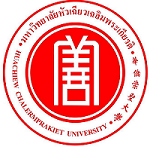กรุณาใช้ตัวระบุนี้เพื่ออ้างอิงหรือเชื่อมต่อรายการนี้:
https://has.hcu.ac.th/jspui/handle/123456789/3780| ชื่อเรื่อง: | Acquisition of naturally acquired antibody response to Plasmodium falciparum erythrocyte membrane protein 1-DBLα and differential regulation of IgG subclasses in severe and uncomplicated malaria |
| ผู้แต่ง/ผู้ร่วมงาน: | Natharinee Horata Kiattawee Choowongkomon Siriluk Ratanabunyong Jarinee Tongshoob Srisin Khusmith ณัฐริณี หอระตะ เกียรติทวี ชูวงศ์โกมล ศิริลักษณ์ รัตนบรรยงค์ ศรีสิน คูสมิทธ์ Huachiew Chalermprakiet University. Faculty of Medical Technology Kasetsart University. Faculty of Science Kasetsart University. Faculty of Science Mahidol University. Faculty of Tropical Medicine Mahidol University. Center for Emerging and Neglected Infectious Diseases |
| คำสำคัญ: | Plasmodium falciparum พลาสโมเดียมฟัลซิปารัม Severe malaria มาลาเรียชนิดรุนแรง Immunoglobulins แอนติบอดี |
| วันที่เผยแพร่: | 2017 |
| แหล่งอ้างอิง: | Asian Pacific Journal of Tropical Biomedicine 7, 12 (December 2017) : 1055-1061 |
| บทคัดย่อ: | Objectives To explore whether individuals infected with Plasmodium falciparum (P. falciparum) develop antibodies directed against PfEMP1-DBLα, and to assess their IgG subclass distribution in severe and uncomplicated malaria. Methods The anti-PfDBLα IgG and their IgG subclass distributions in plasma of severe (SM) and uncomplicated malaria (UCM) were assessed by enzyme-linked immunoabsorbent assay. The antibody profiles to P. falciparum blood stage antigens were evaluated. CD36 binding ability was determined by static receptor-binding assays. Rosette formation was performed by staining with acridine orange. Results Significantly higher number of UCM (86.48%) than SM (57.78%) plasma contained total acquisition of specific IgG to P. falciparum antigens (P = 0.000). Similar manners were seen in response to P. falciparum DBLα with significant difference (UCM, 59.46% vs SM, 40.00%; P = 0.014). Anti-PfDBLα-IgG1 and -IgG3 were the predominant subclasses. Similar percentage of UCM (31.82%) and SM (33.33%) plasma contained only IgG1, while 13.64% of UCM and 27.78% of SM plasma contained only IgG3. Anti-PfDBLα-IgG1 coexpressed with more than one subclass was noted (UCM, 27.27%; SM, 16.67%). Obviously, IgG1 coexpressed with IgG3 (9.09%) was observed in only UCM plasma. IgG1 was coexpressed with IgG2 in UCM (9.09%) and SM (11.11%) plasma, while IgG1 was coexpressed with IgG4 only in UCM plasma (4.55%). IgG subclasses to P. falciparum antigens were distributed in a similar manner. Only the levels of IgG1, but not IgG3 were significantly higher in UCM than in SM. Conclusions These data suggest that individuals infected with P. falciparum can develop the anti-PfEMP1 antibodies with the major contribution of specific IgG subclasses. The balance and the levels of anti-PfDBLα IgG subclasses play a crucial role in antibody mediated protection against severe malaria. |
| รายละเอียด: | สามารถเข้าถึงบทความฉบับเต็ม (Full Text) ได้ที่: https://www.sciencedirect.com/science/article/pii/S2221169117310298 |
| URI: | https://has.hcu.ac.th/jspui/handle/123456789/3780 |
| ปรากฏในกลุ่มข้อมูล: | Medical Technology - Articles Journals |
แฟ้มในรายการข้อมูลนี้:
| แฟ้ม | รายละเอียด | ขนาด | รูปแบบ | |
|---|---|---|---|---|
| Acquisition-of-naturally-acquired-antibody-response-to-Plasmodium-falciparum-erythrocyte-membrane-protein.pdf | 94.11 kB | Adobe PDF | ดู/เปิด |
รายการทั้งหมดในระบบคิดีได้รับการคุ้มครองลิขสิทธิ์ มีการสงวนสิทธิ์เว้นแต่ที่ระบุไว้เป็นอื่น
